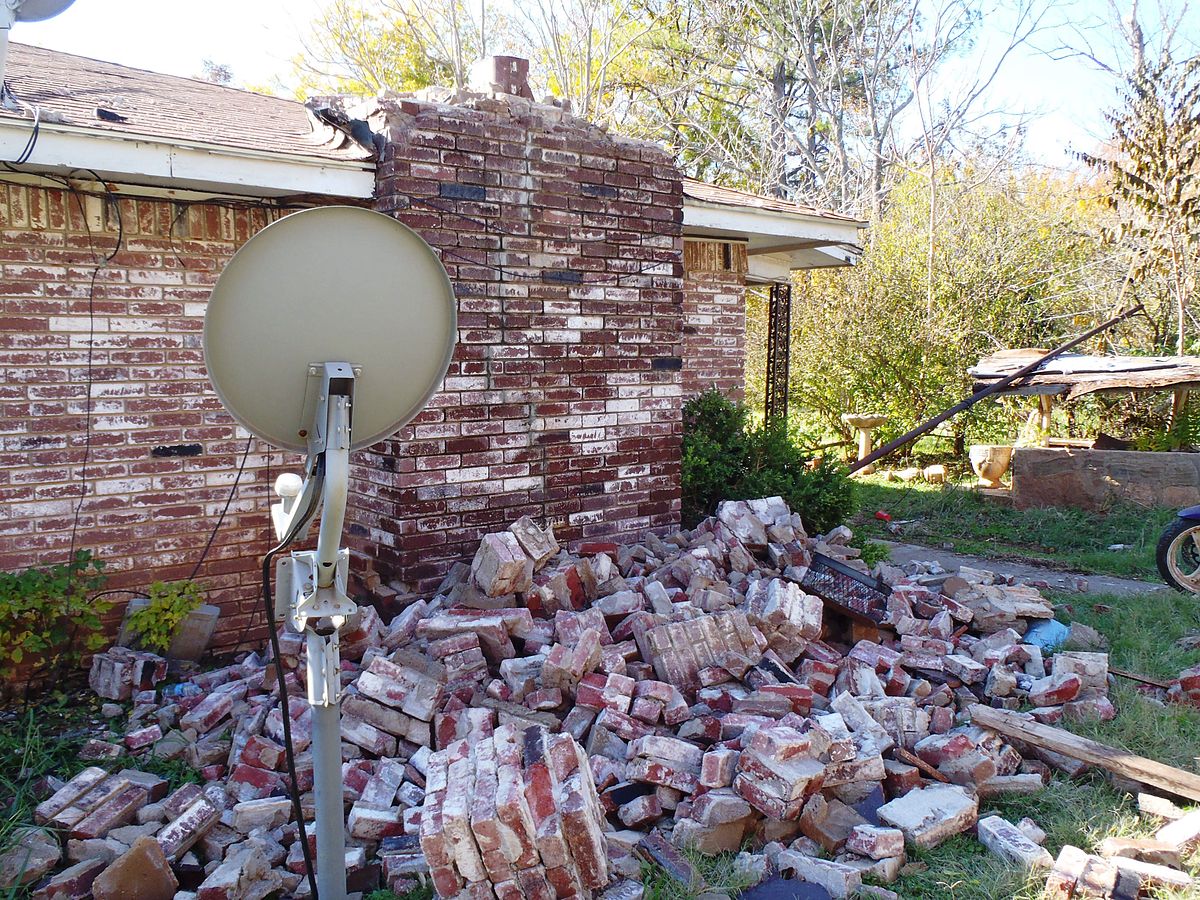Man-made earthquakes in Oklahoma (USA) are strongly linked to the depth at which waste water from the oil and gas industry is injected into the ground, according to a recent study published in Science. One of the authors is Delft risk researcher and philosopher Roger Cooke of the Faculty of Electrical Engineering, Mathematics and Computer Science.
Natural earthquakes are bad enough, but when man-made earthquakes enter the picture, Oklahoma takes the cake. (Photo: Wikipedia)
We all know about the Groningen earthquakes. While they are serious enough, they are dramatically outdone by the huge number of man-made earthquakes generated in Oklahoma. This American state has been a seismic hotspot for the past decade, with several major earthquakes causing damage – including a magnitude 5.8 earthquake in 2016.
The connection between ‘seismicity’ – the frequency of earthquakes – and deep fluid injection into underground rock formations is well established, but scientists, policymakers, and the oil and gas industry have been bewildered by the unprecedented surge in earthquake activity in Oklahoma. Since 2011, at its peak there was an approximately 800-fold increase in the annual number of earthquakes.
How can that increase be explained? Oklahoma’s well operators have injected an average of 2.3 billion barrels of fluids per year into the ground since 2011. Waste water is routinely disposed of, typically at depths of one to two kilometres below the ground surface. Using a powerful computer model incorporating injection well records and earthquake data from the US Geological Survey, a research team consisting of Roger Cooke of TU Delft and colleagues at the University of Bristol, the University of Southampton and Resources for the Future, shows conclusively that Oklahoma’s seismicity is strongly linked to fluid injection depth. The work was recently published in the journal Science.
‘We developed an advanced Bayesian network’
The researchers examined the connections between injection volume, depth, and location, as well as geological features over a six-year period. Or in scientific terms: “We developed an advanced Bayesian network to model joint conditional dependencies between spatial, operational, and seismicity parameters,” Cooke and his colleagues write. The study used innovative new software, Uninet, which was developed by Cooke’s group.
The team found that the joint effects of depth and volume are critical, and that injection volume becomes more influential – and more likely to cause earthquakes – at depths where layered sedimentary rocks meet crystalline basement rocks. This is because deeper wells allow fluids easier access into fractured basement rocks that are much more prone to earthquakes.
The underlying causes of Oklahoma’s induced earthquakes are an open and complex issue, not least because there are over 10,000 injection wells with many different operators and operating characteristics, all in an area of complex geology. The study also shows how raising injection well depths to above the basement rocks in key areas could significantly reduce the annual energy released by earthquakes, thereby reducing the relative likelihoods of larger, damaging earthquakes.
Thea Hincks, Willy Aspinal, Roger Cooke and Thomas Gernon. Oklahoma’s induced seismicity strongly linked to wastewater injection depth. Science 16 Mar 2018



Comments are closed.